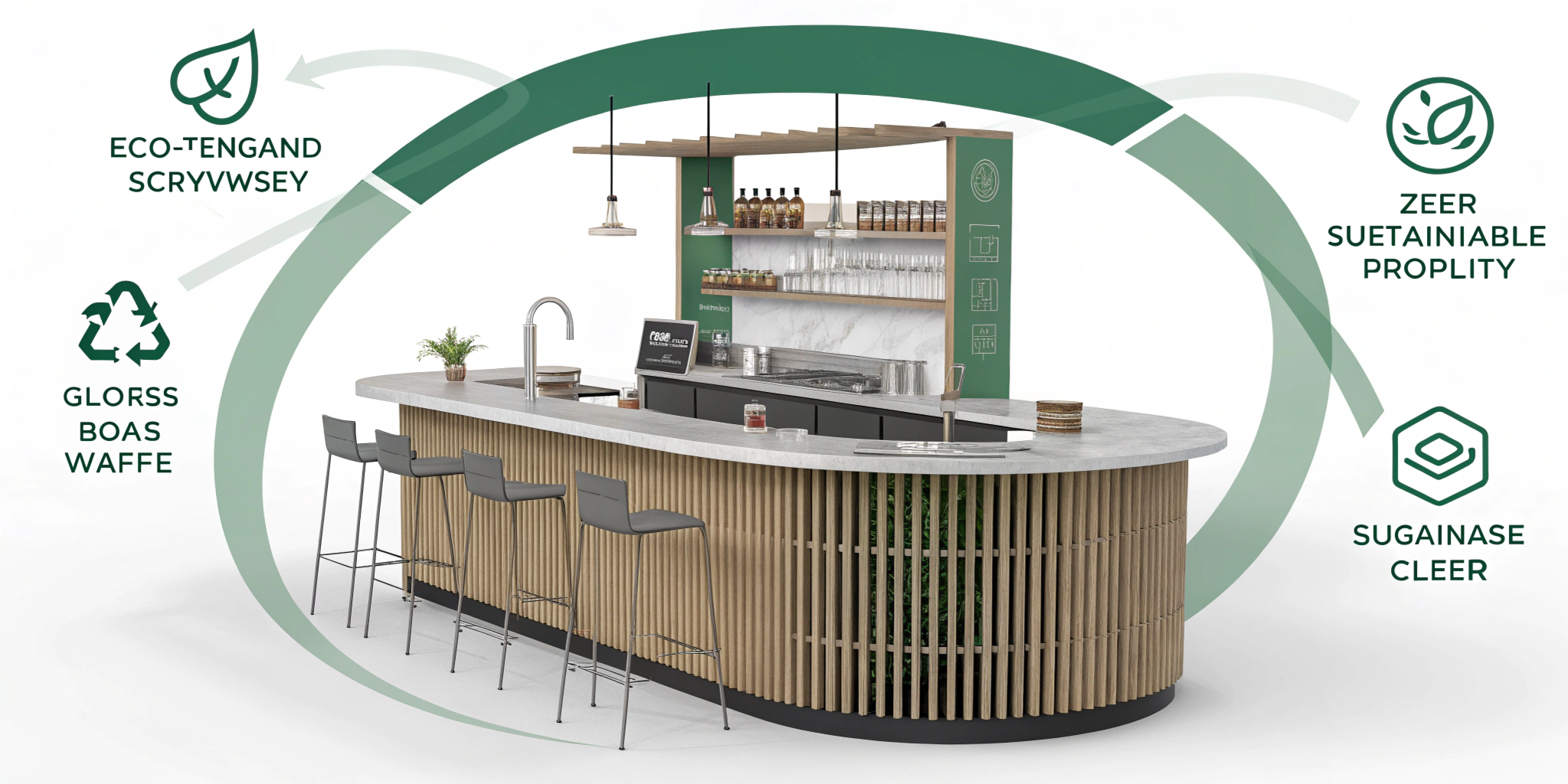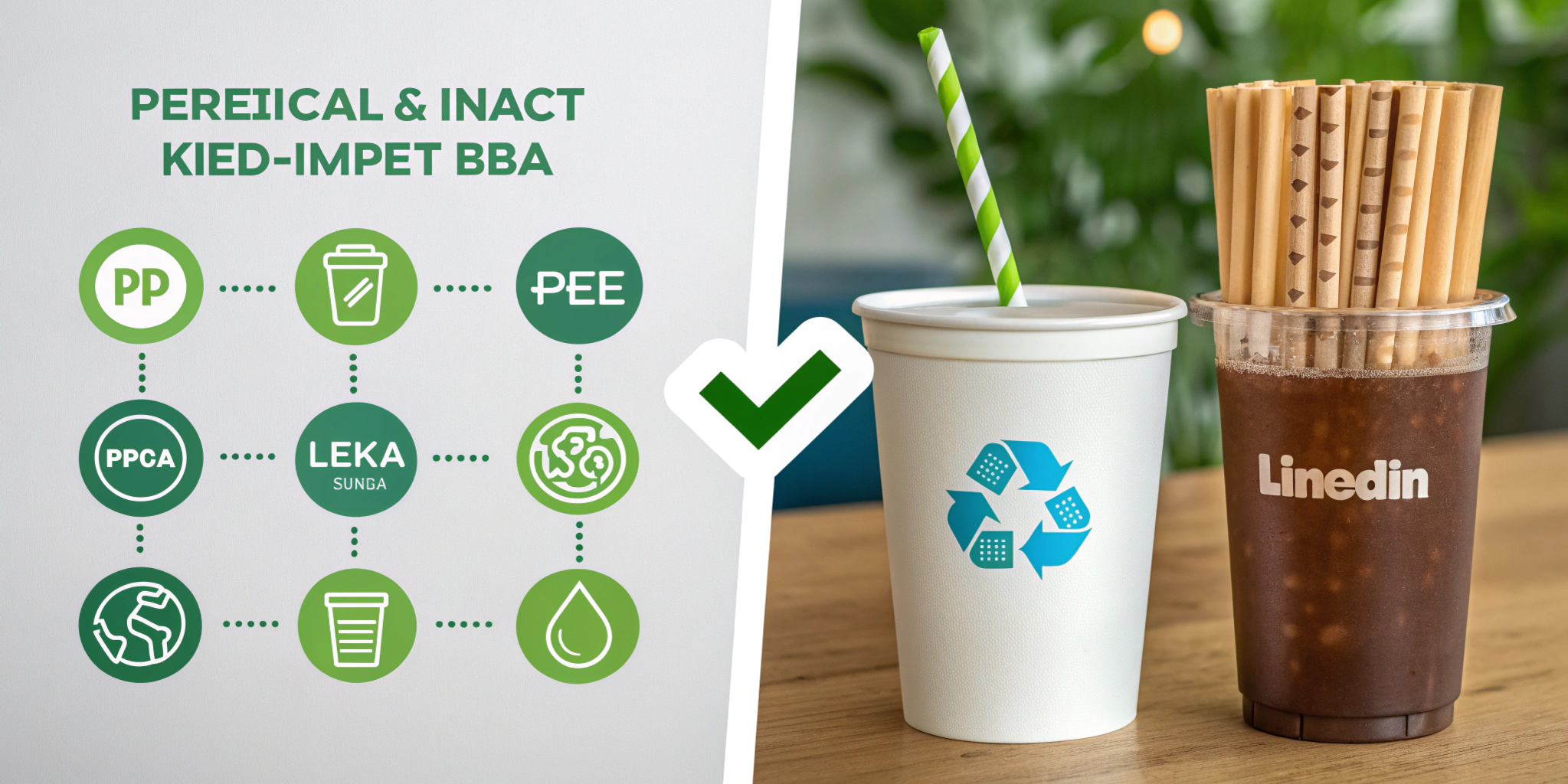
I. The Urgent Imperative: Shifting from Linear to Circular
The global reliance on single-use plastics has created a monumental environmental crisis, with plastic straws serving as a poignant symbol of the linear “take-make-dispose” economic model. These seemingly innocuous items persist in our environment for centuries, breaking down into insidious micro- and nanoplastics that infiltrate ecosystems, posing severe threats to marine life through ingestion and injury. This unsustainable paradigm depletes finite resources, generates colossal waste, and disrupts natural systems, demanding an immediate and fundamental shift in how businesses operate.
Enter the circular economy – a transformative framework designed to decouple economic growth from resource consumption. Its core principles are clear: eliminate waste and pollution, circulate products and materials at their highest value, and regenerate natural systems. This holistic approach not only mitigates environmental degradation but also unlocks new avenues for innovation, efficiency, and competitive advantage. For forward-thinking organizations, prioritizing sustainability means aligning procurement and operations with global mandates, notably the United Nations Sustainable Development Goal 12 (UN, 2015), which champions sustainable consumption and production patterns. This alignment is no longer optional; it’s a strategic imperative for long-term viability and impact.
Business risks for hospitality and foodservice include reputational damage, regulatory fines, and missed opportunities for market differentiation if this challenge is ignored.
Embracing circularity is a strategic imperative for long-term viability and impact in hospitality and foodservice.
II. Driving Growth: The Surging Market for Sustainable Straws
The market dynamics underscore the urgency and opportunity. The global eco-friendly straw market, valued at approximately USD 6.90 billion in 2024, is projected to surge to an astounding USD 24.48 billion by 2034, demonstrating a robust Compound Annual Growth Rate (CAGR) of 13.50% from 2025 to 2034 (Precedence Research, 2024). This explosive growth is a direct response to escalating consumer demand for environmentally responsible products, with compelling data indicating that 80% of consumers actively prefer sustainable options, and a significant 66% are willing to pay a premium for them (NielsenIQ, 2023).
Beyond consumer sentiment, stringent government regulations are accelerating market adoption at an unprecedented pace. Bans on single-use plastics, particularly evident across the European Union and increasingly in North America, compel businesses to seek compliant alternatives. In 2023, North America commanded over 35% of the market’s revenue share, reflecting its early adoption and regulatory push. However, the Asia Pacific region is poised for the fastest growth through 2030, signaling a global commitment to transitioning away from conventional plastics. These market forces create a powerful impetus for procurement managers and supply chain executives in hospitality and foodservice to re-evaluate their portfolios and embed sustainable solutions.

The eco-friendly straw market’s rapid growth signals a powerful impetus for sustainable solutions.
III. Pioneering Materials: Diverse Sustainable Straw Solutions for Circularity
Innovation in sustainable straw materials is rapid and diverse, extending far beyond simple paper alternatives. Today’s solutions span advanced plant-based bioplastics like Polyhydroxyalkanoates (PHA), lignocellulosic biocomposites, and refined versions of traditional materials such as paper and bamboo. The focus is on harnessingresource efficiencyby utilizing agricultural waste streams. Materials like sugarcane bagasse (the fibrous residue after juice extraction), rice, and even dried coconut leaves, as demonstrated by companies like Sunbird Straws since 2018, exemplify this approach, turning by-products into valuable, biodegradable items.
Moreover, materials such as cellulose acetate, exclusively adopted by Unistraw since 2018, represent a significant leap. Sourced from trees and vinegar-derived acetic acid, cellulose acetate offers durability comparable to conventional plastic, eliminating the “soggy straw” drawback often associated with paper. For ultimate product circulation, reusable options like stainless steel, glass, and silicone straws stand as bastions of waste reduction, designed for repeated use and extended lifespans, minimizing the need for constant material input. For a deeper dive into material choices in the hospitality sector, explore our comparison ofsugarcane vs. bamboo sustainable straws in hospitality.
Sustainable straws leverage diverse materials, from bioplastics to agricultural waste, for enhanced circularity.
III.A. Navigating Bioplastics and Biodegradability Standards
The landscape of bioplastics and their biodegradability is complex, necessitating a clear understanding of certification standards to ensure true environmental impact. In the U.S., the ASTM D6400 standard rigorously regulates product biodegradability, serving as a critical benchmark for compostable claims. Similarly, in Europe, the EN 13432 standard dictates the requirements for packaging recoverable through composting and biodegradation. For instance, while Polylactic Acid (PLA) straws are bio-based, they are often restricted under the EU’s Single-Use Plastics (SUP) Directive unless they explicitly meet stringent EN 13432 compostability standards, emphasizing the need for precision in compliance for foodservice operations.
Certifications from reputable bodies like the Biodegradable Products Institute (BPI) and TÜV Austria are indispensable. These certifications provide assurance that products will properly break down in industrial composting facilities, with some even verifying home or marine biodegradability. Procurement teams must demand these certifications to avoid greenwashing and ensure genuine circularity. Furthermore, comprehensive Life Cycle Analyses (LCAs) are essential to evaluate the true environmental footprint of sustainable straws, critically assessing everything from raw material sourcing to end-of-life impact. This includes vigilance against “forever chemicals” (PFAS), which have been detected in some paper and bamboo straw alternatives, underscoring the need for transparent and verifiable claims. For guidance on managing compostable products, refer to ourB2B playbook for sustainable waste management.

Certifications and LCAs are crucial for verifying true environmental impact and avoiding greenwashing.
III.B. Reusability and Extended Lifespan: The Ultimate Waste Reduction
While innovative disposable options are vital, reusable straws (e.g., stainless steel, glass, silicone) epitomize the core circular economy principle of keeping resources in use for as long as possible. By directly extending product life, they dramatically minimize waste generation over countless uses. Although their initial environmental impact might be higher due to manufacturing and transportation, this is significantly offset by their repeated utility, leading to a much lower overall lifecycle impact compared to their single-use counterparts.
Businesses can actively maximize the circularity of reusable options by implementing robust cleaning, sanitization, and return programs. This infrastructure not only supports extended product life but also positions the organization as a leader in sustainable practices, appealing to environmentally conscious customers and stakeholders. The long-term waste reduction and potential cost savings associated with reusability make it a compelling component of any comprehensive circular supply chain strategy for hotels and restaurants.
Reusable straws offer significant long-term waste reduction and cost savings through extended product lifespans.
IV. Strategic Material Selection: A Comparison of Sustainable Straws
Selecting the optimal sustainable straw material requires a nuanced understanding of operational impact, compliance, and ROI potential. The table below outlines key considerations for decision-makers in hospitality and foodservice:
| Funkce | B2B Operační dopad | Poznámka dodržování předpisů | Potenciál návratnosti investic |
|---|---|---|---|
| Papírová brčka | Widely available, low initial cost; potential for softening/flavor impact, not recyclable with food contamination. | FSC® certification for responsible sourcing; often best for industrial composting (EN 13432). | Enhanced brand image, immediate regulatory compliance; high consumer acceptance despite performance issues. |
| PLA Straws | Biobased, clear appearance; requires industrial composting, not home compostable; can break down into microplastics if not properly composted. | Must meet EN 13432 standards for compostability; restricted in some EU regions under SUP Directive. | Reduced virgin plastic waste, alignment with bio-based mandates; potential lower landfill costs if composted. |
| PHA brčka | Marine biodegradable, home compostable; offers superior durability than paper; less prone to PFAS contamination. | TÜV Austria certification for home/marine biodegradability is key for disposal flexibility. | Premium pricing offset by strong eco-credentials; broad disposal flexibility for customers; strong brand differentiation. |
| Opakovaně použitelné (kov/sklo) | Higher upfront cost, requires washing/logistics infrastructure; highly durable for repeated use, significant initial carbon footprint. | No specific disposal compliance; focus on hygiene and maintenance standards (e.g., NSF). | Significant long-term cost savings, near-zero waste generation; strong sustainability statement, potential for customer loyalty programs. |
| Agricultural Waste (e.g., Sugarcane Bagasse) | Utilizes by-products, variable supply chains; good performance characteristics, often compostable. | ASTM D6400/EN 13432 for compostability; often supports local economies and waste reduction. | Reduced reliance on virgin materials, potential for cost-effective sourcing; strengthenssupply chain sustainabilityand local community engagement. |
Strategic material selection balances operational impact, compliance, and ROI for optimal sustainability.
V. Operationalizing Circularity: Integrating Sustainable Straws into Supply Chains
Successfully integratingsustainable straws in circular economy supply chainsis more than a procurement decision; it demands end-to-end collaboration across manufacturers, distributors, and retailers. This interconnectedness is crucial for achieving true efficiency and minimizing environmental impact. While growing demand for eco-friendly straws signals progress, it can also strain raw material supply, particularly for specialized bioplastics or agricultural by-products, necessitating strategic, diversified sourcing for hospitality and foodservice.
To mitigate carbon footprints, businesses must prioritize efficient manufacturing processes and localized supply chains wherever feasible. This reduces the energy and emissions associated with long-distance transportation. Crucially, proper disposal methods are paramount for genuine circularity. For example, BioPak’s Compost Connect initiative demonstrates this principle by linking foodservice businesses directly to industrial composters, diverting over 1,500 tonnes of waste from landfills and showing a tangible return on sustainable practices. Understanding and implementing these integrated approaches can revolutionize a company’s environmental performance. For deeper insights into the future of sustainable straws in foodservice, refer to our article onsugarcane straws and the sustainable foodservice future.

Integrating sustainable straws requires end-to-end collaboration for true circularity and efficiency.
V.A. Overcoming Challenges in Adoption: Cost and Performance Trade-offs
The transition to sustainable straws is not without its hurdles. One significant barrier is the often higher production costs associated with eco-friendly materials and specialized manufacturing processes, making them appear less competitive than conventional plastics on a unit-cost basis. Furthermore, performance issues, such as the well-known tendency of some paper straws to soften quickly or affect beverage flavor, can impact customer experience and brand perception in high-volume foodservice environments.
Despite these challenges, a strategic perspective reveals compelling long-termROI potential. Reduced waste disposal costs, enhanced brand loyalty among increasingly eco-conscious consumers, and improved regulatory compliance can significantly offset initial investments. Moreover, ongoing innovation is rapidly addressing performance trade-offs. Materials like Unistraw’s cellulose acetate, for instance, are engineered to offer plastic-like durability without the environmental burden, demonstrating that solutions are continually evolving to meet both sustainability and functional demands for hospitality and foodservice.
Overcoming cost and performance hurdles reveals significant long-term ROI potential for sustainable straws.
VI. Real-World Impact: Mini Case Studies in Sustainable Straw Adoption
The successful integration of sustainable straws into large-scale operations is a testament to their viability and strategic value. Several leading organizations have already demonstrated impactful shifts:
- HMSHost: In January 2023, this global restaurateur, a prominent player in airport dining venues across the U.S., took a significant step by introducing BIOLO PHA biodegradable straws. This move showcased a tangible commitment to reducing single-use plastics in high-traffic environments, aligning their vast operations with modern sustainability expectations.
- TOUS les JOURS: The popular French-Asian bakery café chain also embraced advanced sustainable solutions, rolling out plant-based straws made with PHACT™ PHA across its U.S. stores in February 2025. This large-scale adoption signals a major brand shift, influencing consumer perception and setting a new standard for the quick-service industry.
- Kaiser Permanente: This healthcare giant, recognizing its extensive environmental footprint, proactively phased out traditional plastic straws. By adopting compostable alternatives, Kaiser Permanente set a crucial precedent for responsible procurement within the healthcare sector, demonstrating how even large, complex organizations can prioritize environmental stewardship.
- Sunbird Straws (India): A remarkable example of circularity in action, Sunbird Straws innovates by transforming dried coconut leaves—an abundant agricultural by-product—into biodegradable, multilayered straws. This zero-waste solution not only addresses plastic pollution but also empowers local economies by creating value from otherwise discarded materials.
These examples underscore that transitioning to sustainable straws is not merely theoretical; it’s being implemented by diverse industries, yielding tangible environmental benefits and reinforcing corporate responsibility across hospitality, foodservice, and beyond.
Real-world case studies demonstrate the viability and strategic value of sustainable straw adoption.

VII. Navigating the Regulatory Landscape and Certifications for Responsible Procurement
The global regulatory environment is a primary driver for the rapid adoption of sustainable straws. Government policies, particularly widespread bans on single-use plastics, actively accelerate this shift. The EU’s Single-Use Plastics (SUP) Directive, for example, has profoundly impacted supply chains, specifically restricting materials like PLA unless they adhere to stringent compostability standards such as EN 13432. This regulatory pressure mandates that procurement professionals in hospitality and foodservice prioritize certified alternatives.
To ensure compliance and validate environmental claims, adherence to robust certification programs is essential. Certifications like those from the Biodegradable Products Institute (BPI) in North America, TÜV Austria (which validates home and marine biodegradability), and the Forest Stewardship Council (FSC®) for paper products, provide verifiable proof that products meet stringent environmental criteria. Furthermore, programs like the USDA BioPreferred initiative in the United States actively promote and certify biobased products, guiding businesses toward truly sustainable procurement choices and mitigating the risk of greenwashing. For full regulatory details, please refer to ourcomprehensive regulatory guide for sustainable foodservice.
Navigating regulations and certifications is crucial for responsible, compliant sustainable straw procurement.
VIII. Future Outlook: Trends Shaping Circular Straw Supply Chains
The next 5-10 years will witness a continued evolution in the sustainable straw market, driven by escalating environmental pressures and technological advancements. We can anticipate significant developments in several key areas for hospitality and foodservice supply chains:
- Advanced Biopolymer Innovations: Expect to see new generations of bioplastics with enhanced properties, including superior durability, heat resistance, and diverse end-of-life options (e.g., broader marine biodegradability, more efficient industrial composting). Research into new lignocellulosic biocomposites and novel agricultural waste derivatives will yield materials that are not only sustainable but also high-performing.
- Hyper-Localized & Decentralized Production: As supply chain resilience becomes paramount, there will be a growing trend towards localized production of sustainable straw materials and finished products, reducing transportation emissions and supporting regional economies.
- Smart & Interactive Materials: Innovations could include straws with embedded indicators for biodegradability status or even edible straws that dissolve cleanly post-consumption, pushing the boundaries of true zero-waste solutions.
- Integrated Waste Stream Solutions: Future regulations will likely push for more integrated waste management infrastructure that can effectively handle compostable and biodegradable materials. This includes expanded industrial composting facilities and potentially new technologies for material valorization.
- Global Harmonization of Standards: While regional regulations currently vary, there is a growing push for more harmonized international standards for biodegradability and compostability, simplifying compliance for global supply chains.
- AI and Data Analytics in LCA: Advanced analytics and AI will play a greater role in conducting comprehensive Life Cycle Assessments (LCAs), providing more precise environmental impact data to guide material selection and supply chain optimization.
These trends will reshape procurement strategies, compelling decision-makers to invest in R&D, forge new partnerships, and build more resilient, truly circular supply chains in the hospitality and foodservice sectors.
Future trends promise advanced biopolymers, localized production, and integrated waste solutions for circularity.
IX. Beyond Compliance: Quantifying the Competitive Advantage
For B2B decision-makers in hospitality and foodservice, embracing sustainable straws extends far beyond mere regulatory compliance; it’s a profound strategic move that translates into quantifiable business benefits and a distinctcompetitive advantage.
- Cost Savings: While initial unit costs may sometimes be higher, long-term cost savings accrue from reduced waste disposal fees, lighter packaging weights (reducing shipping costs), and potential tax incentives or rebates for sustainable practices. Furthermore, a proactive shift mitigates the financial risks associated with future environmental regulations and potential non-compliance penalties.
- Risk Mitigation: By moving away from fossil-fuel-dependent plastics, businesses reduce exposure to volatile oil prices and supply chain disruptions. Compliance with evolving global environmental mandates also protects against legal repercussions, reputational damage, and market access restrictions, particularly in stringent markets like the EU.
- Brand Value Uplift: In an era where consumer and investor scrutiny of environmental performance is at an all-time high, adopting visible sustainable solutions like eco-friendly straws significantly enhances brand perception. This commitment signals leadership, fosters consumer trust, and resonates with a growing segment of environmentally conscious customers, leading to increased loyalty and patronage.
- Market Share Opportunity: Early movers in the sustainable products space can capture significant market share. As the global eco-friendly straw market accelerates towards USD 24.48 billion by 2034, businesses that proactively integrate these solutions position themselves as preferred partners and suppliers, tapping into new revenue streams and differentiating themselves in a crowded marketplace. This creates a powerful business case for proactive investment.
Embracing sustainable straws offers significant competitive advantages beyond mere regulatory compliance.

Conclusion: Pioneering a Plastic-Free Future in Circular Economy Supply Chains
The integration ofsustainable straws in circular economy supply chainsis not merely an environmental trend; it is a strategic imperative for modern businesses in hospitality and foodservice. By embracing material innovation, adhering to rigorous certifications, and optimizing supply chain operations, organizations can significantly reduce plastic pollution, enhance brand reputation, and achieve long-term cost efficiencies. The global market’s projected growth to USD 24.48 billion by 2034 underscores the undeniable momentum towards a more circular future, driven by stringent regulatory demands and increasingly conscious consumerism. This is a pivotal moment for procurement managers, operations directors, sustainability officers, and supply chain executives to lead a transformative shift.
Act Now: Optimize Your Procurement Strategy
Integrating sustainable straws is a strategic imperative for a competitive, plastic-free future.
Často kladené otázky
Q: Why are sustainable straws crucial for hospitality and foodservice?
A: Sustainable straws help hospitality and foodservice businesses reduce plastic waste, comply with evolving regulations, meet consumer demand for eco-friendly options, and enhance brand reputation, mitigating environmental and reputational risks.
Q: What are the key types of sustainable straw materials available?
A: Key materials include paper, PLA (Polylactic Acid), PHA (Polyhydroxyalkanoates), reusable options like stainless steel/glass, and agricultural waste derivatives such as sugarcane bagasse or coconut leaves.
Q: How do I ensure my sustainable straws are truly compostable or biodegradable?
A: Look for certifications from reputable bodies like BPI (ASTM D6400) in the U.S. or TÜV Austria (EN 13432) in Europe, which verify industrial or home compostability and biodegradability claims.
Q: What are the cost implications of switching to sustainable straws for a restaurant chain?
A: While initial unit costs might be higher, long-term savings can come from reduced waste disposal fees, enhanced brand loyalty, and avoiding potential regulatory fines, offering a strong ROI.
Q: How can foodservice operations manage the logistics of reusable straws effectively?
A: Implementing robust cleaning, sanitization, and return programs is essential. This infrastructure not only supports extended product life but also positions the organization as a leader in sustainable practices.






